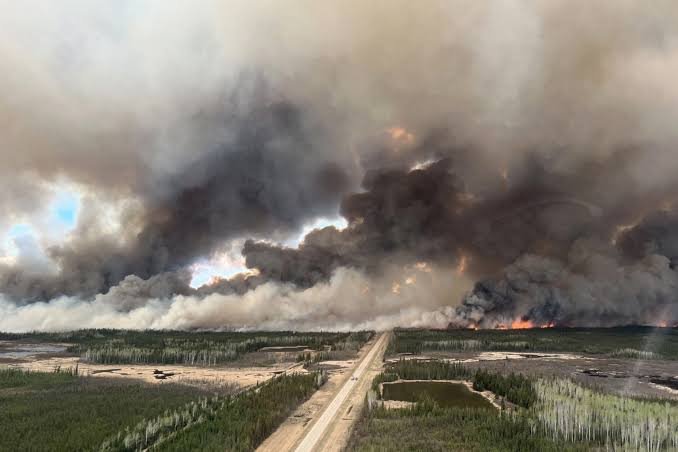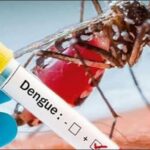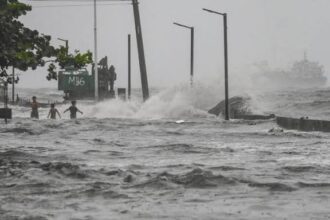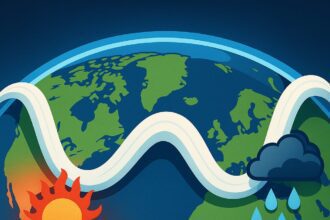A massive cloud of smoke from wildfires blazing across Canada has drifted south, blanketing roughly a third of the United States in a hazy shroud, forecasters said Wednesday. While much of the smoke remains high in the atmosphere, parts of New England, New York, and the Midwest are experiencing dangerously poor air quality.
The plume—thickest over the Northeast—reached from the Dakotas all the way to Georgia, the National Weather Service’s Weather Prediction Center reported. Marc Chenard, a forecaster with the service, noted that most regions aren’t seeing major air quality issues. “But where the smoke is thicker and lower, like in New York and Connecticut, it’s a different story,” he added.
In Massachusetts, the town of Williamstown recorded a hazardous air quality index (AQI) of 228 Wednesday morning, one of the worst readings in the Northeast, according to IQAir. That’s well into the “very unhealthy” category—anything over 200 poses serious health risks. By comparison, New York City and Washington, D.C., were in safer territory, with AQI levels around 55–56.
Back in Minnesota, the haze had started to lift slightly. Ely, near the Canadian border, saw a major improvement from a staggering 336 on Tuesday down to 65—a “moderate” level. Minneapolis, which had been the third-worst city in the world for air quality just a day earlier, improved from 168 to 96.
The smoke is the result of over 212 wildfires burning across three Canadian provinces—Manitoba, Saskatchewan, and Alberta. According to the Canadian Interagency Forest Fire Centre, about half of those fires remain out of control. Since May, more than 2 million hectares (nearly 5 million acres) have gone up in flames.
Health experts are sounding the alarm. Yang Liu, an environmental health professor at Emory University, said toxic particles in wildfire smoke are small enough to burrow deep into the lungs and even enter the bloodstream. “It will affect everyone at some level, all walks of life,” he warned. “It’s bad.”
Infants, seniors, and people with pre-existing health conditions are most vulnerable, but Liu emphasized that even healthy individuals can suffer. As the wildfires continue to burn and weather patterns shift, officials are urging people in affected areas to monitor air quality and limit time outdoors when necessary.














